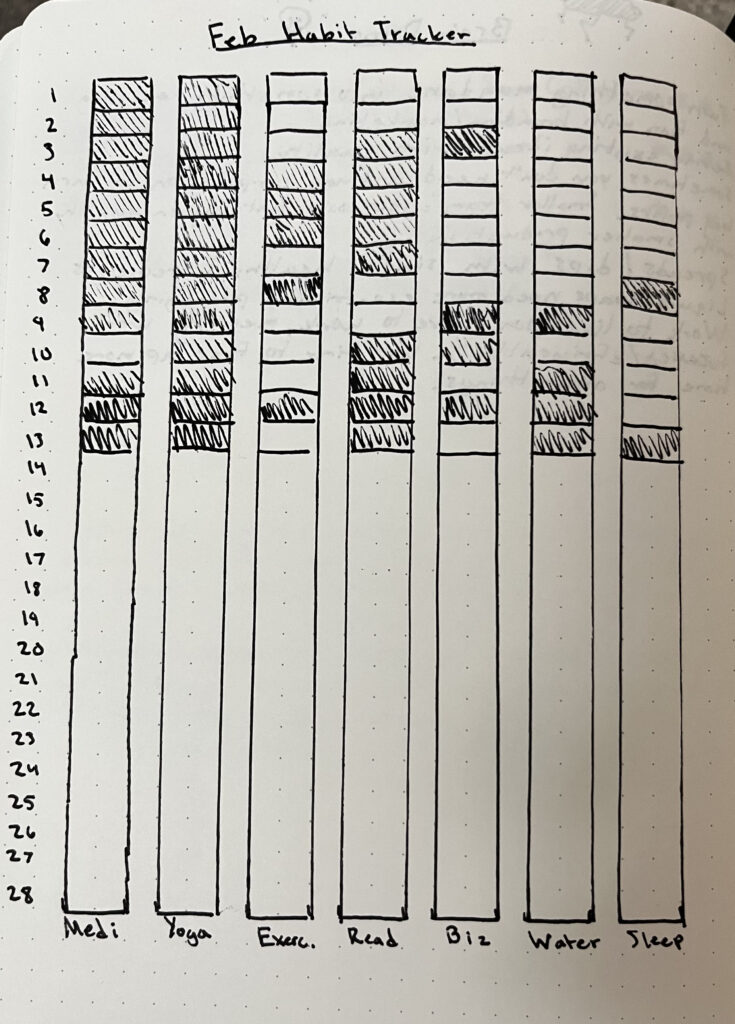I’m a little late to the game on this one. Bullet journaling was hyped up in 2017 and during the COVID lockdown. If you’re unfamiliar with the concept, Bullet journaling is a system that turns an ordinary notebook into an all-in-one productivity tool using good old-fashioned pen and paper.
Computers are incredible machines. They can do anything at lightning speed–from providing us with tools to aid us in our daily lives to keeping us connected to the entire world. There are thousands of productivity apps out there that use the flexibility and high speed of computers to help us organize our lives with minimal effort.
So, why would anyone want to resort back to a notebook when computers can do way more much faster and easier? Well, just because of those reasons.
Technology failed me
The innovations and strides in automation in the world of productivity software are at the same time its Achilles heel.
I used to use TodoIst to manage and schedule my to-do lists, Habitica to track my habits, Google Calendar to plan for upcoming events. Then I switched to another habit tracker that I can’t remember the name of because Habitica felt childish and had more features than I needed. Then one day I decided I wasn’t drinking enough water so I bought a water tracking app to make sure I was reaching my water goals.
After a while, I got out of the habit of checking these apps and ignored all of their pesky reminders. It became way too overwhelming to remember to go to each individual app that met some small need. On top of that, there were so many other annoying features (and sometimes ads) that cluttered their interfaces making them hard to use. Wasn’t the point of all these apps to make productivity easier to manage?
Enter the bullet journal
What makes the bullet journal so great is that it’s simple.
There are really only four main components:
- An index for organizing your notebook
- A future log for a six-month overview of tasks planned far in advance
- A monthly log for the current month’s scheduling
- A daily to-do list
That’s it!
Of course, the beauty of all of this is that the notebook is flexible entirely to your needs. If you want to track your habits, you can add a habit tracker. If you’re a home chef and want to plan fun and interesting meals, create a meal planner and recipe combo.
Your bullet journal will do everything you need and nothing you won’t.
It’s just a notebook
Another aspect of my bullet journal I love is that it’s just a notebook.
I’m not going to open it up and check my messages before I look at my calendar. It does what I need it to do: keep my life organized and stress-free.
There are no distractions or flashing notifications. When I see it on my desk in the morning, I know I’m going to open it up and plan for the day.
When I don’t need it I just stow it away in a drawer and stop thinking about it. It has none of the allure or attraction of a device that entices me to keep checking it and worrying about it.
I have total peace of mind.
Sometimes, it’s good to slow down
Analog systems are slow and cumbersome. In the case of a bullet journal, that’s a good thing.
Bullet journaling has made managing my life stress-free. There’s something relaxing and fulfilling about taking some time at the start of your day to write down tasks/goals or relaxing after a busy day of work to jot down ideas or reflect on your life.
Organizing my life has become an escape for me. I stare at a screen all day at work and it’s nice to unwind while still being productive.
I also find that I’m able to recall important tasks easier when I write them down. In my opinion, this is because writing is a much more mindful practice than typing. It forces you to slow down and concentrate on your writing. There’s no backspace in a journal, which forces you to be more intentional about what you write.
On the topic of intention, I found that I write down fewer, more important tasks than I did with an online to-do list. In the past, my to-do lists would accumulate rapidly to upwards of seven tasks a day. The unnecessary clutter would overwhelm me and I’d wind up stressing over it and getting frustrated when I’d have leftover tasks.
With a bullet journal, I now focus on what I actually want to get out of the day and I end up getting more meaningful tasks done.
Don’t do too much
I remember first getting into bullet journaling when I was in high school. Back then, I spent days researching how to properly organize it, what the best add-ons were, and what notebooks and supplies worked best for bullet journaling.
In the end (when I eventually got to journaling), I got frustrated with the fact that my bullet journal didn’t look as nice as the ones social media influencers boasted. Even after spending hours on a single page.
This prompted me to give up after a week or so.
Now, I take a much looser, relaxed approach to bullet journaling. For me, my notebook is just a journal. It’s ok to make mistakes and draw curved lines. At the end of the day, it’s meant to be a tool for organizing and tracking my life, not something to be gawked at.
Here’s my humble habit tracker for example:

This probably took me less than 15 minutes to put together. It’s simple, clearly tracks my progress at a glance, and is easy to fill out (which means I’m much more likely to fill it out daily).
So, if you want to use your bullet journal purely as a productivity tool, don’t overwhelm yourself. Keep it as simple as possible (especially when you’re just starting out) and don’t be afraid to cross things out or make a mess. Productivity tools don’t have to be pretty.
And if you want to add more feel free to. If you want to add some creative expression and some elements of fun by all means do so. Do what works for you!
Don’t try to emulate what popular YouTubers and other influencers do. What they’re doing works for them and for them alone. They make bullet journals as extravagant as possible because their journals are also a tool to draw clicks and grow a following.
So give it a try
Dust off an old notebook or staple some sheets of paper together to give bullet journaling a test drive. I highly encourage you to try this for at least a couple of weeks before giving up.
If it gets too overwhelming for you, tone it back a little and just work with the basics. Your bullet journal can start as just a simple to-do list if that’s all you need out of it.
And probably the most key thing is don’t be afraid to make mistakes. Being a perfectionist will stress you out in the long run. If you’re getting stressed or overwhelmed using your journal then you’re doing it wrong!
I really hope you give bullet journaling a shot and that it makes as much of an impact in your life as it has in mine.
Until next time!
Sam


